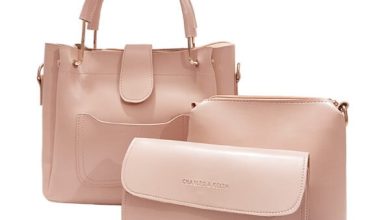What to Include In Your Commercial Roof Maintenance Plan

Do you have an emergency plan in place for your roof? If not, you could end up facing costly emergency roof repair bills. A proper roof maintenance plan for the commercial roof needs of your building will help you keep it functional and safe.
In this post, we will go into detail about what to include in a maintenance plan for commercial roofing systems. Keep reading to learn how a commercial roof maintenance plan will help you combat the causes of roof failure and how to create a plan that will benefit your company.
Regular Inspections
Regular inspection should be included in your commercial roof maintenance plan. By regularly inspecting your roof, you can catch small problems before they become big, expensive problems. Routine maintenance inspections can also help extend the life of your roof.
Most commercial roofs should be inspected at least twice a year, once in the spring and once in the fall. But, if your roof is in a particularly harsh environment, you may need to inspect it more often. During your inspection, you should look for any signs of wear and tear, including cracks, leaks, or missing shingles.
If you find any problems during your inspection, you should have them repaired as soon as possible. The longer you wait to repair a problem, the worse it will get, and the more expensive it will be to fix. By inspecting and repairing your roof, you can keep it in good condition for many years to come.
During the inspection, the contractor will check for any cracked or missing tiles. They will also check the condition of the flashing, and inspect the roof ventilation to make sure it is functioning.
It is important to have a commercial roof maintenance inspection done to keep your roof in good condition.
Debris Removal
It is important to keep your commercial roof clean and free of debris to ensure its longevity and efficiency. Over time, leaves, twigs, and other organic matter can accumulate on your roof and lead to clogged drains and other problems. In addition, debris can act as an insulator, trapping heat and moisture on your roof and leading to premature deterioration.
There are a few different ways to remove debris from your commercial roof. One is to use a leaf blower or power washer to blast it away. Another is to use a roof rake to remove larger pieces of debris. For smaller pieces of debris, you can use a broom or a shop vac. Whichever method you choose, be sure to work and avoid damaging your roof.
While you should check for debris and remove it as necessary, there are a few things you can do to help prevent it from accumulating in the first place. One is to keep trees trimmed near your roofline so that branches don’t have a chance to fall. You can also install gutter guards to keep leaves from clogging up your gutters.
Finally, make sure that you clean your roof surface to remove any dirt, debris, or leaves that may have blown onto it
Proper Ventilation
A well-ventilated roof helps to prevent the build-up of heat and moisture, which can lead to premature aging and deterioration of the roofing materials. In addition, proper ventilation can help to prevent the formation of ice dams in cold weather and can help to keep the interior of the building cooler in summer.
A well-ventilated commercial roof helps to prevent the buildup of heat and moisture, which can lead to premature deterioration of the roofing system. Proper ventilation also helps to reduce energy costs by keeping the building cooler in the summer and warmer in the winter. There are several different commercial roof types, including ridge vents, soffit vents, and turbine vents.
Each type of vent has its own advantages and disadvantages, so it is important to consult with a roofing contractor to determine which type of vent is best suited for your particular roofing system.
Without proper ventilation, heat and moisture can build up inside the roof system, leading to premature degradation of the roofing materials. In addition, improper ventilation can also lead to the formation of condensation on the underside of the roof deck, which can eventually lead to the growth of mold and mildew.
Regular Cleaning
Regular cleaning of your commercial roof is important for several reasons. It helps to remove dirt, leaves, and other debris that can clog up your gutters and downspouts, causing water to back up and potentially damaging your roof. It helps also to keep your roof in good condition by removing any mold, mildew, or algae that can cause premature deterioration.
Depending on the type of roof you have, you will need to clean it more or less often. For example, an asphalt roof will need to be cleaned every 3-6 months, while a metal roof can go up to a year between cleanings. Regular cleaning also allows you to spot any potential problems early on so that they can be fixed before they cause serious damage.
Most commercial roofing systems are designed to be self-cleaning to some degree. However, over time, dirt, debris, and other pollutants can accumulate on the roof, affecting its performance and lifespan. Regular cleaning is the best way to ensure that your commercial roofing system stays in top condition.
There are a few different methods that can be used to clean a commercial roof, depending on the type of roofing system and the level of cleaning that is required. For light cleaning, a pressure washer can be used to remove dirt and debris. For more stubborn stains, a power washer or chemical cleaner may be necessary.
Here Are Tips to Include In Your Commercial Roof Maintenance Plan
Your commercial roof maintenance plan should include a thorough inspection of your roof at least once a year. Inspections should be performed more frequently if your roof is exposed to severe weather conditions. Your plan should also include maintaining gutters and drains to prevent water damage, as well as regular cleaning and trimming of trees and shrubs to prevent debris from damaging your roof.
Did you learn something from this article? Browse our page for more informative and helpful tips.






